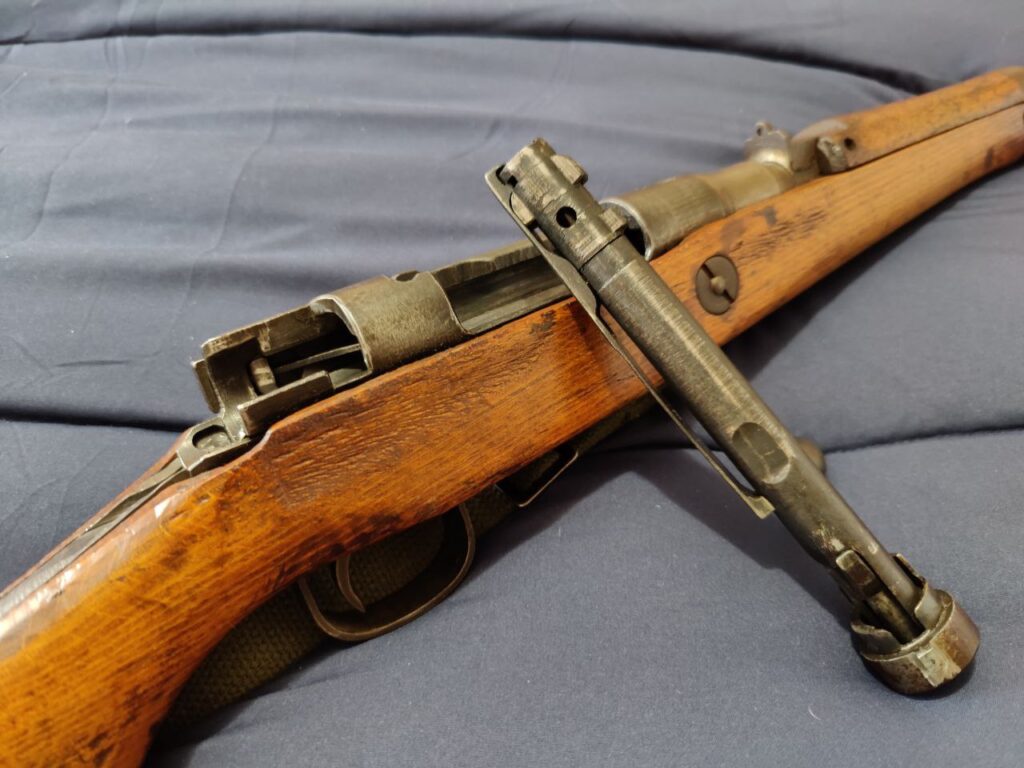The Ethics of Collecting Milsurp

Introduction
In past blog posts, I have shown off some military surplus (“milsurp”) firearms from my personal collection. The hobby of collecting can be a fascinating pursuit within the broader world of firearm ownership, lying at an intersection between history, engineering, political science, and shooting. Collecting, particularly collecting military surplus, is a deep rabbit hole, but a rewarding one for those who dare to enter it. Unlike the average Joe who only buys modern firearms, however, those of us who acquire vintage weaponry face some philosophical quandaries specific to our niche within the gun world.
Good Custodianship
The whole reason we collect old guns is because we feel they’re special in a way your average Glock 19 or Ruger 10/22 isn’t. Obviously, milsurp guns are desirable not just for their age and rarity, but for historical significance. They are artifacts produced long ago by governments that no longer exist to fight wars long since completed. Just like any other artifact, they can be a lens through which to uncover truths about their place and time of manufacture; to understand the gun is to better understand history. It is therefore our responsibility as collectors to preserve surplus firearms—and other artifacts—so that others can discover and appreciate that history for generations to come.
In concrete terms, that means we need to keep our milsurp guns in good condition, as close to their most historically significant configurations as possible. If you come into possession of an old Mauser covered in surface rust and with a crumbling stock, you have a responsibility to either correctly restore it yourself, pay a professional gunsmith to do it, or sell it to someone who can and will. If you pick up an intact Lee-Enfield that the Indian government converted to 7.62mm NATO in the 1950s, however, I argue that you should keep it as-is. That conversion is a legitimate military configuration with real historical significance. The commonly accepted doctrine in the collecting community is to alter the weapon as little as possible. Don’t send your classic Smith & Wesson K-38 off to be stripped down and Cerakoted just because the original bluing has some holster wear.
Problematic Provenance
The military surplus firearms we collect were not manufactured for hunting, competition, or other sporting purposes; they were made to fight wars. Many popular models were produced by repressive authoritarian governments that committed war crimes and other crimes against humanity on a colossal scale. Many collectors, sometimes unknowingly, own weapons which were used to massacre innocent civilians and forcibly evacuate their villages. The American collector market seems to have an unsettling fetish for WWII German and Soviet small arms in particular. How can we reconcile our own morals with our ownership of tools of evil?
First of all, recognize that these firearms do not have an ideology. They are products and tools of politics, yes, but weapons have no moral compass and cannot think for themselves—at least not yet. As both a firearm enthusiast and a historical researcher, I chafe at phrases like “Nazi weaponry” and “Communist rifle.” A firearm is an inanimate object with no political views of its own; you can own and appreciate a historical artifact without necessarily endorsing those who made or used it. Second, understand that human society’s collective responsibility to preserve history supersedes any individual’s right to comfort. Mass murder and ethnic cleansing can and should offend you, but whether you choose to understand it or ignore such atrocities, they still happened and will almost certainly happen again. It is therefore your responsibility as a collector to uncover historical truths, no matter how upsetting they may be, and preserve that information in the hopes that it can help prevent future human suffering.
Conclusion
Collecting vintage firearms, particularly military surplus ones, comes with a spate of responsibilities above and beyond those already associated with “normal” firearm ownership. When you enter this hobby, you necessarily become an amateur historian and are implicitly tasked with helping to preserve that history. It isn’t for everyone, to be fair, but I know I speak for the collecting community writ large when I say it is an immensely rewarding pursuit. Like the tight-knit circle of DeLorean car enthusiasts, we aren’t really the owners of our chosen artifacts, but temporary caretakers of items that predate us and will long outlive us. Be a good caretaker.
